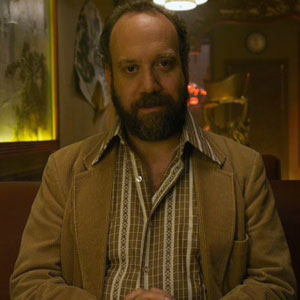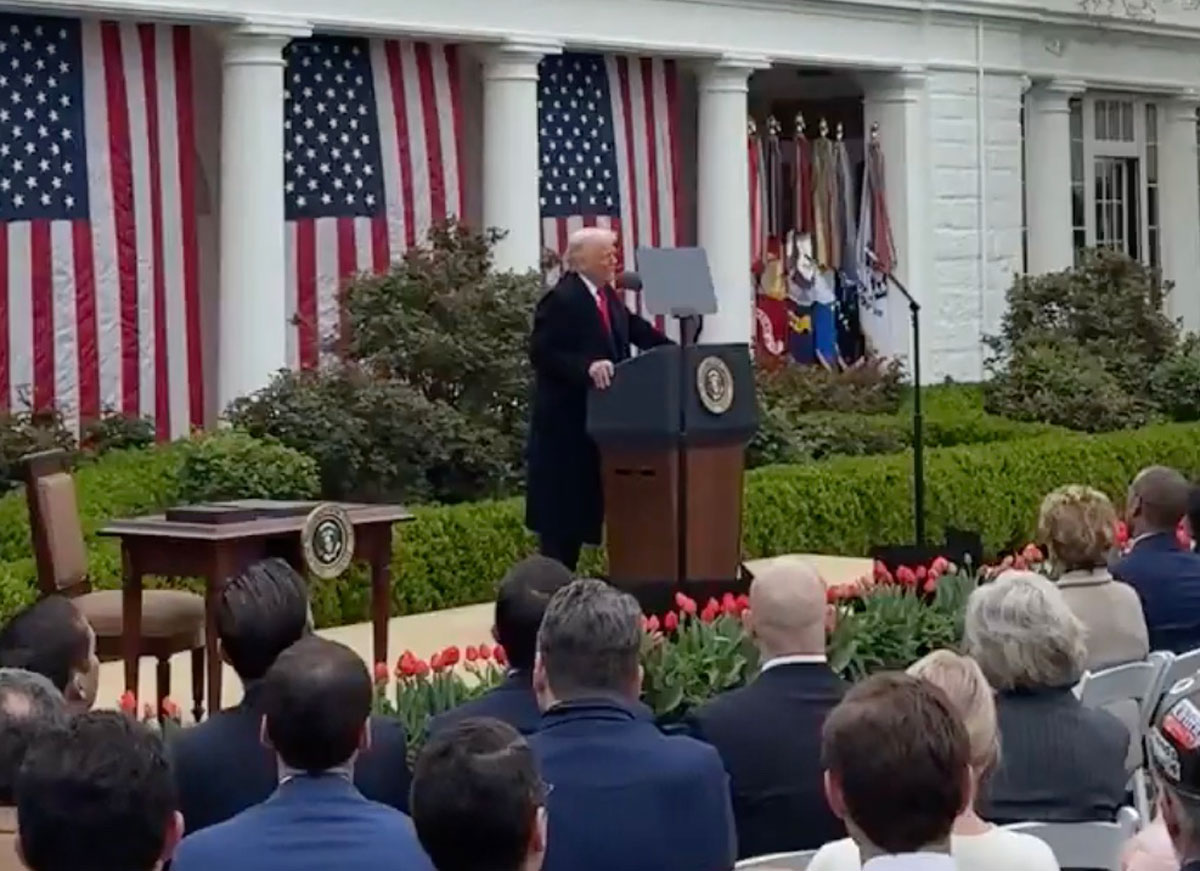Paul Giamatti And Don Coscarelli Interview On 'John Dies at the End,' The Meat Monster, Piracy
The comedy-horror film John Dies at the End afforded Paul Giamatti the perfect chance to work with a director he has long admired, Don Coscarelli, and to appear in one of his favorite film genres.
“It was like I got an opportunity to be in the kind of movie I like to sit and watch,” Giammati told Uinterview exclusively. “You know, ironically, lots of things I’m in are not things I’d go pay to see. I mean they’re great, and I love doing them and they’re great movies, but this is something I would sneak in to see.”
Giamatti, 45, was born in New Haven, Conn. and went on to attend Yale University both as an undergraduate, where he majored in English, and as a graduate student, where he earned an MFA in Drama. Giamatti then spent time on Broadway and with Seattle’s Annex Theater. After bouncing around with some small roles in television and film, Giamatti landed the part of Kenny “Pig Vomit” Rushton in Private Parts, starring Howard Stern. Giamatti then went on to be featured in more high profile films such as My Best Friend’s Wedding, The Truman Show and Saving Private Ryan. Giamatti is perhaps best known for his work in the Academy Award-winning film Sideways opposite Thomas Hayden Church, Cinderella Man, for which he was nominated for the Academy Award for Best Supporting Actor, and the HBO miniseries John Adams, for which he received a Primetime Emmy Award and Golden Globe Award.
With his extensive film background in mind, Giamatti had been a longtime fan of Coscarelli and his Phantasm movies, and so the award-winning actor jumped at the chance to work with him. “I wanted to do something with him so badly that I was like whatever, and it happened to be this thing that was really amazing,” Giamatti said.
Well, true story, I got an email from an Amazon robot, and it said that if I like the zombie fiction that I just purchased from this small market press, called Permuted Press, that I would love their next release, called John Dies at the End. And then I read the little log-line and I was hooked because it just sounded great. And literally I was thinking, ‘This would make a great movie,’ and then I went on the web, and see David Wong had created his own little paradigm and self-publishing, and what he was doing was just releasing his chapters on the internet for free, and he developed a massive fan base, and then Permuted Press put it out in a limited paperback and that’s when I got it. When I contacted David and made the arrangement for the movie rights, then after that St. Martin’s bought it for distribution. So it’s an interesting evolution, where the movie really helped him [David] get writer distribution, but he was really the one who created this movie idea.
I just have known Don [Coscarelli] for a little while, a couple of years. I met him because I was a fan of his movies, and Bubba Ho-Tep in particular, and we had been talking about trying to get this other Bubba movie made. So Don just one day came to me with this and said we had this other script, because with Bubba people were interested — and then they weren’t — so Don said, 'I’m going to put that aside for a minute, I have this other thing.’ And I thought it was great. I didn’t know about the book. I didn’t look at the book until after it was done. I wanted to do something with him so badly that I was like whatever, and it happened to be this thing that was really amazing.
I was a kid when the first Phantasm movie came out. That movie was such a thing, and I was on the Jersey Shore as a kid. I think that’s where we saw it. I was 10 maybe when it came out. My brothers snuck us in to see it. But it was this thing everyone had to see. It was super freaky too. It was a level of, like, it was terrifyingly bizarre, like this movie was just pure evil and bizarre, and you had to see it. So I can remember seeing that when I was younger.
When I was reading the book, I was so excited that it could be a movie just from the log-line, and it seemed like it was right in my wheelhouse, so to speak, with silent other-worldly invasion. As I was reading it, I was cheerleading it, hoping it wouldn’t fail. The first third of it is just awesome and linear and movie-like. We’re in the pocket, and then it takes this crazy, insane trip where they go off to Las Vegas and as a novel it works great, but with a movie there’s no way we could have made any of that, but they go in, convoluted, into a lot of different things, but then it comes back to this ending and I thought, well, hmm... because I have to go from 350 pages to 100 pages, I could take the first 60 pages and I could grab the last 30 pages and maybe put it together and that was my plan. The good part about that was then when I was making the arrangements with David Wong I asked him how he would make a movie out of this thing and he sent me back an email and said, ‘I’d probably take the first chunk and stick it onto the end chunk.’ I thought, Ok well, good minds think alike. That was how we did it. It was my first time adapting a bigger novel like that and one of my defense systems was to just jam as much in there and keep it moving.
I’ve always really liked stuff like this. I liked horror movies, but I like whatever it is Don makes, I don’t know if I’d call them horror movies really. That sensibility of stuff is something I really like. It was like I got an opportunity to be in the kind of movie I like to sit and watch. You know, ironically, lots of things I’m in are not things I’d go pay to see. I mean they’re great, and I love doing them, and they’re great movies, but this is something I would sneak in to see. So I was like, ‘I finally get to be in one of these. I know how to do one of these. I know how to be this kind of guy.’ So it was fun, I was getting to act out a childhood fantasy of being in a horror movie.
DC: I would say maybe the most satisfying would be the latter half of Paul’s scenes because we shot his on the first day, and the nature of the thing with the modest budget we had was we had to cast relative unknowns to play the leads. So we had this young guy Chase Williamson, who started and went through the University of Southern California Drama School, and he had graduated and gone on his first or second interview and it was us. I grabbed him. The blessing and the curse about that is here you have a guy who I think he did one YouTube project, but he was never on a TV show, never on a movie, and then with Paul’s schedule, the first day of shooting he’s working with Paul. And I’m thinking the guy’s going to wilt, it’s just not going to work, but Paul’s a great guy and the two of them bonded and they worked well. PG: He was awesome. DC: And so Day 1 was harrowing, but Day 2 and 3 were just a dream. PG: It was fun. DC: And other than that I’d say that since it’s the best-received scene in the movie was those two or three days of shooting we spent on the floor of the basement with these pieces of meat pulling them around. Because you’re doing it and you’re thinking, ‘This is never going to work,’ because we had like four people and each guy would have two of them and we’d go, ‘You go. You go.’ PG: Is that all just purely pulling the things around on the floor, there was no stop-motion or anything? DC: No, no, it was just pulling. And then we reversed some of them. One person would pull the ribs across and another would pull the wieners across, you know you have these choreographed things. When we got one it worked great and we watched replay and went, ‘Oh, this might work.’ PG: We shot the exterior stuff of that Chinese restaurant in an abandoned reform school basically. This gigantic reform school, and I can’t remember where it is in L.A. DC: Whittier. PG: And it was the most f--ked up, creepiest place I’ve ever been in my life. It was amazing. I mean that place was super terrifying, and that was awesome to be in this place. You could have a break and everybody would just go wander off to wander around this place, which was easily the scariest thing I had ever seen in my life. But that was all really fun. Working with the kid was great and working with Don was great. I was so looking forward to it and it was exactly what I’d hoped it to be.
PG: We offered our services to help them out in whatever way we could. But Don knows what he is doing, as did the other guy producing, and so we did what we could, but we mostly tried to just help in whatever way we could and continued to try to help him out as much as we could, whatever help we could offer him. DC: Paul’s very modest, but they’re making some wonderful movies with his company. PG: Yeah, we’ve done some alright stuff with this place, and we’ve got a TV deal with FX now so we’ll hopefully move into TV soon. DC: And your movie coming out, Lucky Dog. PG: I made a movie with Paul Rudd and we’re these French-Canadian Christmas tree salesmen, and it will come out next Christmas. But we’re doing alright at this place. We just wanted to help them out in whatever way we could. But Don knows how to go about his thing.
DC: It’s a learning experience and truthfully you’ll have to ask me in about three months if it works, but on paper it looks pretty good. And I’ll tell you some of the things that I’ve learned about it is that a couple of the higher Roman numeral Phatasm movies, part three and four, we didn’t get our theatrical release, and we went into the purgatory of direct-to-video back in those days. And that was a curse. It was as if you didn’t make the movie. There’s nothing worse than a direct-to-video movie. But I am finding out that the VOD, ultra VOD premiere, with the new generation used to consuming their media immediately where they want, accept it and love it. I was expecting to get a lot of criticism with Twitter and Facebook and all that, but it appears to be a totally acceptable mode of distribution. And the fact that it’s always advertised as On-Demand and in theaters, so they know it’s coming in all media, so it’s much more legitimate than I really thought it was going to be. I think it may be a new way of going because what they say is that there’s two different markets: the people who like to watch stuff at home and the people that want to go to the theaters. As long as the service evolves it works well.
DC: Our other co-producers on the movie, Brad [Baruh] and Andy [Meyers] have this company called M3 and they’re really great with cutting promotion promos, so we’ve always had them as a backstop and we had been discussing with Magnolia Pictures about piracy. This is the downside to VOD is that it’s immediately available to piracy and there is piracy ongoing, they’re combating it. We’re already getting rave reviews from Croatia. PG: Awesome! Excellent! DC: And Spain’s another one that’s a hotbed for piracy. And then we had this idea to do an interview with the Meat Monster from the movie and I’m thinking, 'Oh, that gives away the Meat Monster.' And so we went back to our center, all things good David Wong, and said, 'We need this piracy thing. Do you have a plan for it?' And he said, 'Let me think.' And then he wrote a one paragraph script for it and it was perfect, and so I just edited it and put it together. Because the thing is David Wong works for Cracked.com and he knows not to talk down to the audience, so you need to make it funny and make them appear to explode as a reason not to pirate, so I hope it works.
RELATED ARTICLES
Get the most-revealing celebrity conversations with the uInterview podcast!






Leave a comment